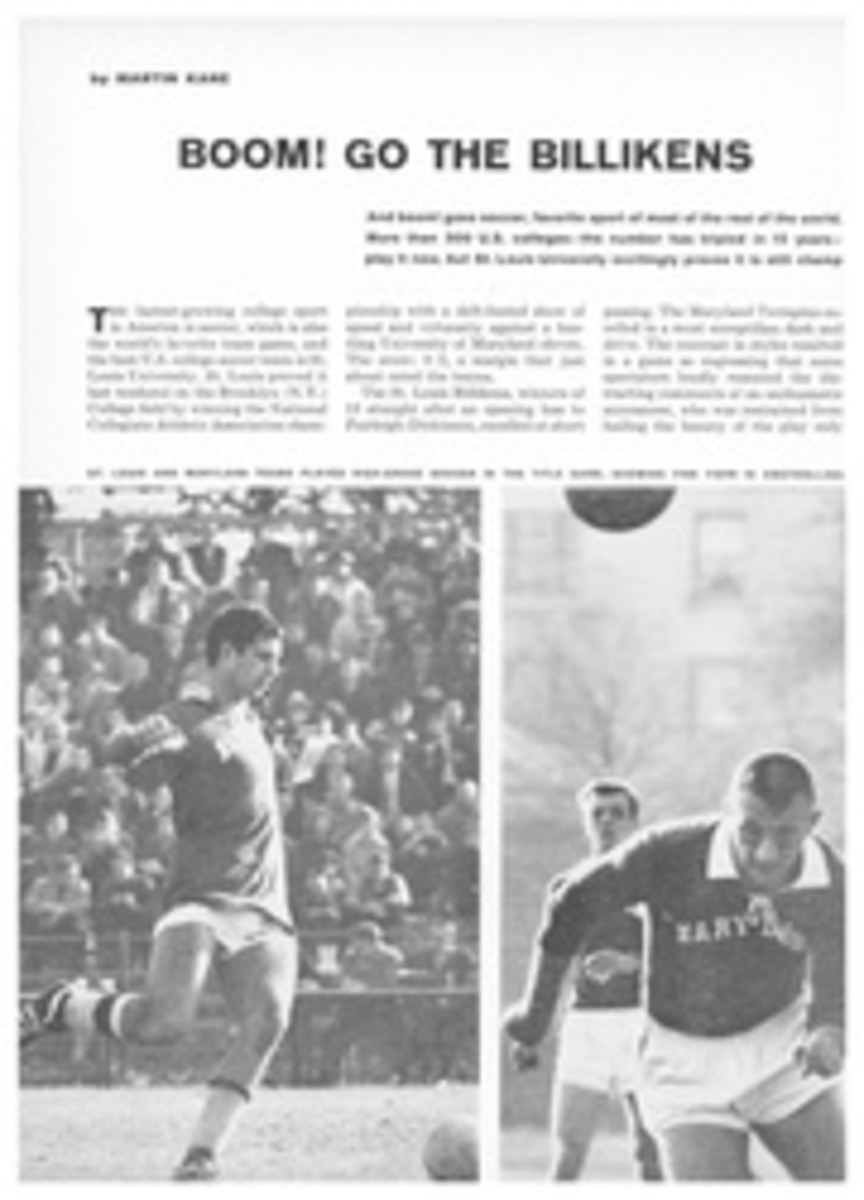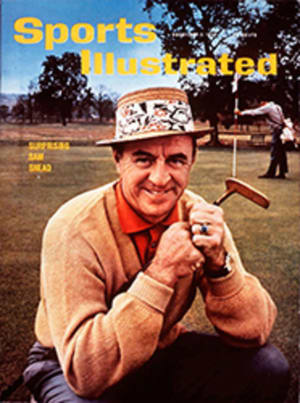
How to bring 'em back best
There is possibly no place in the U.S. which offers a well-schooled gun dog more room for self-expression than a onetime ammo dump now known as the August A. Busch Memorial Wildlife Area in Weldon Spring, Mo. In this sprawling expanse of thickets, marshes, cornfields, lakes and ponds some 30 miles west of St. Louis the 55 best retrievers in the nation, their generally well-off owners and their hard-working handlers collected recently to determine which dog was the fairest one of all—the National Retriever Champion for 1960. The 55 retrievers at Weldon Spring, mostly black Labradors with a sprinkling of Chesapeakes and goldens, had been weeded out from thousands of their kind in lesser field trials throughout the past spring and summer and, presumably, there were no finer dogs in the business. One owner put it in reverent awe: "There just isn't a retriever good enough to be included in this company."
But collecting enough points to prove worthy of this august assembly was not a matter of retriever excellence alone. In a field trial, which tests a dog's ability to recover birds he has seen fall as well as those he has not, the handler is 50% of the team. "He is so important, in fact," said a San Francisco man, "that at the national it is he who all too often freezes up, tries too hard and spoils his dog's showing." Handlers fall into three fairly well defined categories—the public handler, who works for a fee and commissions; the private handler, who works for a salary; and the unpaid amateur, who is, in nearly every case, the dog's owner.
One of the amateurs at Weldon was Mrs. Walter S. Heller, a widow of San Rafael, Calif., who had twice qualified a retriever for the national trials. The owner of nine Chesapeake Bay retrievers, she devotes four days a week to their upbringing and some 20 weekends a year to field trials. She has edited a 107-page book, The History of the Chesapeake Bay Retriever, is president of the American Chesapeake Club, has contributed considerable amounts of energy and money to the training of guide dogs for the blind and is an active duck and pheasant hunter. With what little time remains in her schedule, she attempts "to act like a woman, having my nails done and shopping."
That she is a woman at all makes her unique in retriever circles (there was only one other in the trials), but Mrs. Heller considers it an advantage—with Chesapeakes anyway. "To be responsive to the handler," she says, "the Chesapeake must be smothered with love and understanding, and few handlers have the time for that sort of thing." One of Mrs. Heller's Chesapeakes, a 9-year-old named Nelgard's Baron, who shares her living room by day and her bedroom by night, has in his mouth four gold-capped teeth—Mrs. Heller's answer to an indignity done Baron by a former owner with a file. So excellently did the sweetly dispositioned Baron perform that he came within the skin of his expensive canines of winning the championship.
To watch Mrs. Heller's Baron and his competitors, some 150 ladies and gentlemen of the dog set appeared at Weldon in leather-paneled breeches, smart tweeds and soft, green Tyrolean hats, nearly all of which sagged under the weight of various club badges and field-trial medals that constitute status symbols in the sport. From shooting sticks, stools and the tail gates of their station wagons, they followed the action.
Before the trials had run their course the dogs were exposed to 12 different water and field situations that a retriever might be expected to encounter under actual hunting conditions. Plotted in an ascending order of difficulty, they began with a relatively elementary exercise in which the retriever was obliged to recover two mallards shot over water (one among a cluster of decoys) and to locate, with the help of his handler, a third duck hidden beforehand on the opposite shore of a small pond. One quality under test here was the dog's self-possession, which was given a trying moment or two when a shotgun was unexpectedly fired near by as he returned from recovering the second duck. Of the 55 entries, all but one appeared unfazed by the shot; the exception was a 4-year-old named Del-Tone Ric, who was so shattered by the experience that he was dropped forthwith from the competition. Del-Tone Ric's owner, a St. Paul stockbroker named Charles Cook, was himself so shattered by the dog's failure that he ordered Handler Bill Wunderlich to sell him for cost: $6,000.
In the second series held in a field of 18-inch stubble and weeds eight more contestants failed to satisfy the judges. Then as the several series continued, things became steadily more taxing for dogs and handlers alike. The gallery which kept score with subjective jottings, numbers and plus and minus signs could be heard clucking sympathetically as the mighty began to waver and fall. "A dog can be good one day and mighty disappointing the next," said John Olin, the field-trial chairman. "That's because this business is 60% to 70% luck. If the dog doesn't get the breaks, such as occasionally finding a blind duck almost by accident or catching a suddenly favorable breeze that's carrying the scent, well, he's had it." By the time of the eighth trial, held on the fourth and last day, 42 retrievers had had it, but the guns kept popping away at duck and pheasant to determine whether the 13 retrievers remaining, distracted by birds they had seen fall, could still be effectively "handled" in the recovery of hidden game. Possessed apparently of an uncanny instinct for sighting background landmarks as the game falls and having an exquisite sense of depth perception, a good retriever can remember (or "mark") the whereabouts of several birds at one time, requiring only that the handler dispatch him. Retrieving hidden birds is a far more complicated maneuver in which the handler, familiar with the bird's location, sends the dog running on a "line" toward the quarry and then, like a pilot berthing a ship, directs his movements with arm waves, whistle blasts and shouted commands like "back, go back." Ideally, a retriever will continue in the direction indicated by the handler without once looking back until signaled to do so by the whistle; he will not, in fact, pause in his mission even if he should stumble across a rabbit or squirrel along the way.
Smoke in the cactus
The 12th and final test required the dog to fetch a hidden pheasant 125 yards away while ignoring a marked bird lying just a few yards off in the opposite direction. Only four dogs remained in the championship stakes to face it. One was Mrs. George Murnane's defending champion, Spirit Lake Duke, handled by Joe Schomer, and one, surprisingly, was Mrs. Heller's companionable, gold-dentured Chesapeake, Baron. But most surprising was the exhibition of control and responsiveness being given by a small, lightweight (55 pounds) dark horse Labrador called Dolobran's Smoke Tail, who was handled by his owner, Richard Hecker, a Tucson lawyer.
"I was afraid old Smoke was getting a little too far along for this sort of thing," said Hecker at the end of the trial when his dog ran off with first prize, "but I guess I was wrong." Smoke's victory made his owner the first amateur trainer ever to win the trials. "We've been together for nine years—I paid $125 for him as a 10-week-old—which accounts for how well we work together, but I figured our chances of winning this national, our fourth, were pretty darn slim. You see, old Smoke has spent most of his life dodging cactus on the Arizona desert, hunting quail and doves."
It seemed pretty clear that a dog that had learned to dodge cactus in the desert wasn't likely to make any mistakes—anywhere.
PHOTO
CHAMPION LABRADOR PAHA SAPA CHIEF II PASSES ONE TEST ONLY TO FLUNK ANOTHER AS THE GOING GETS TOUGHER
TWO PHOTOS
ONE OF TWO WOMEN handlers participating at the trials, Mrs. Walter Heller of California urges her champion Chesapeake Nelgard's Baron toward a fallen bird.

